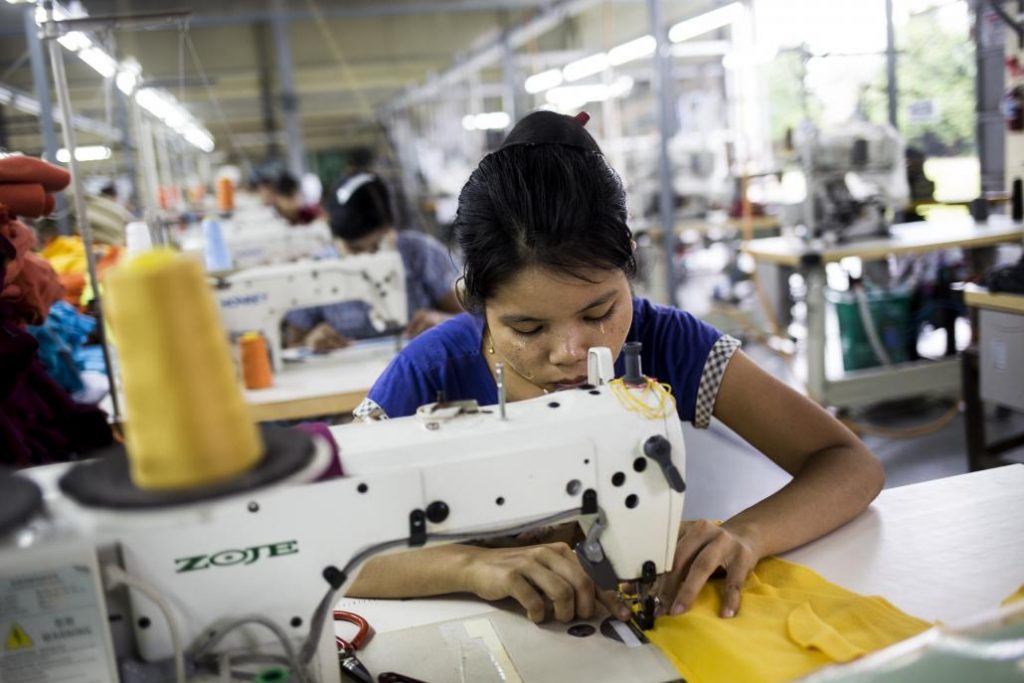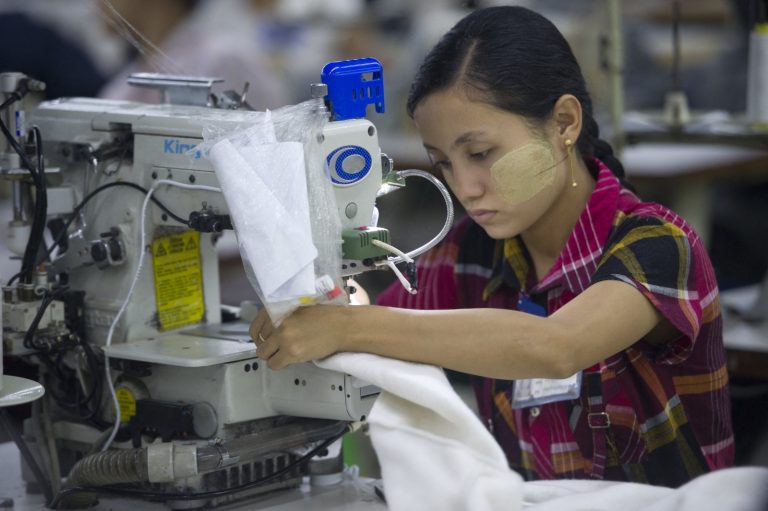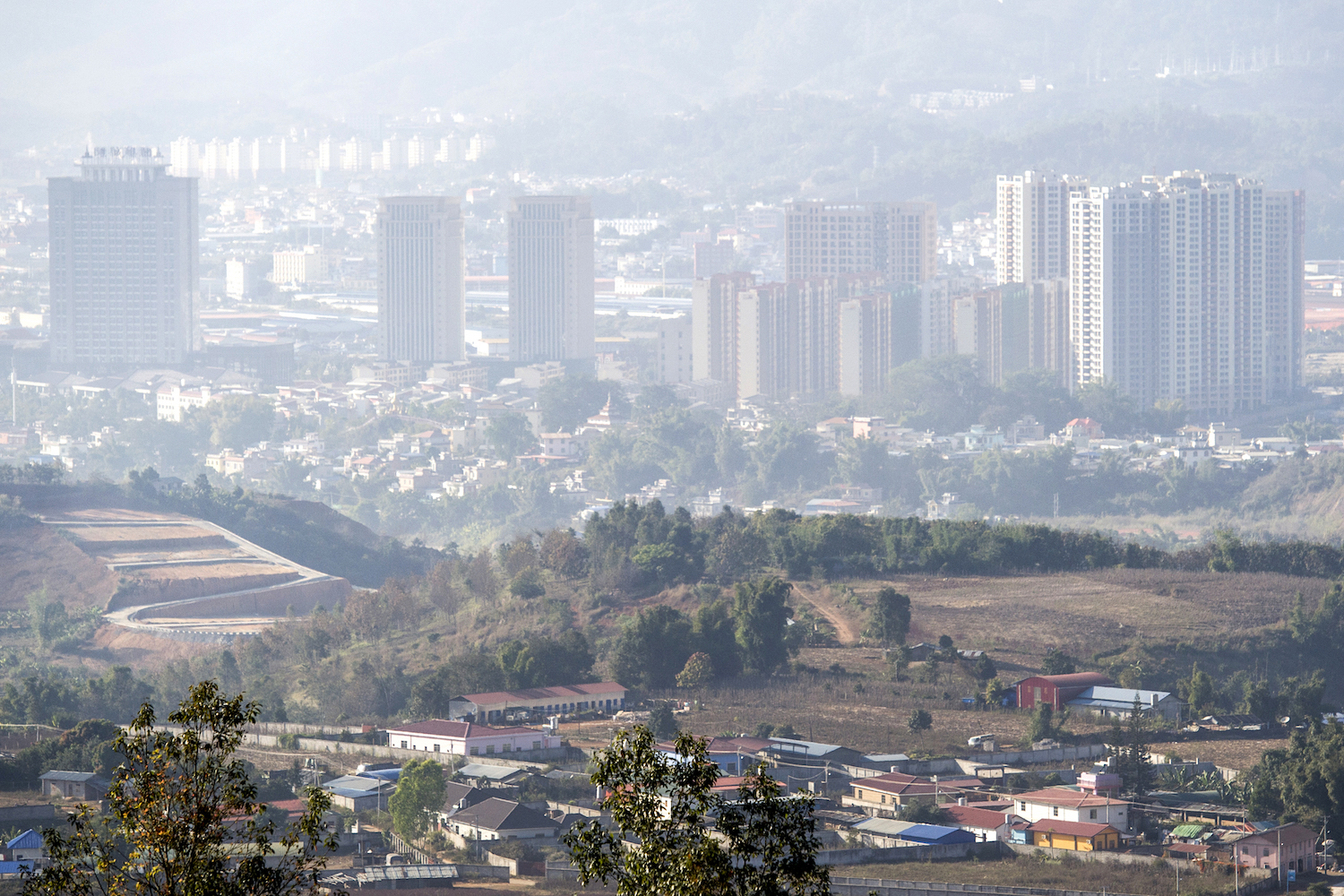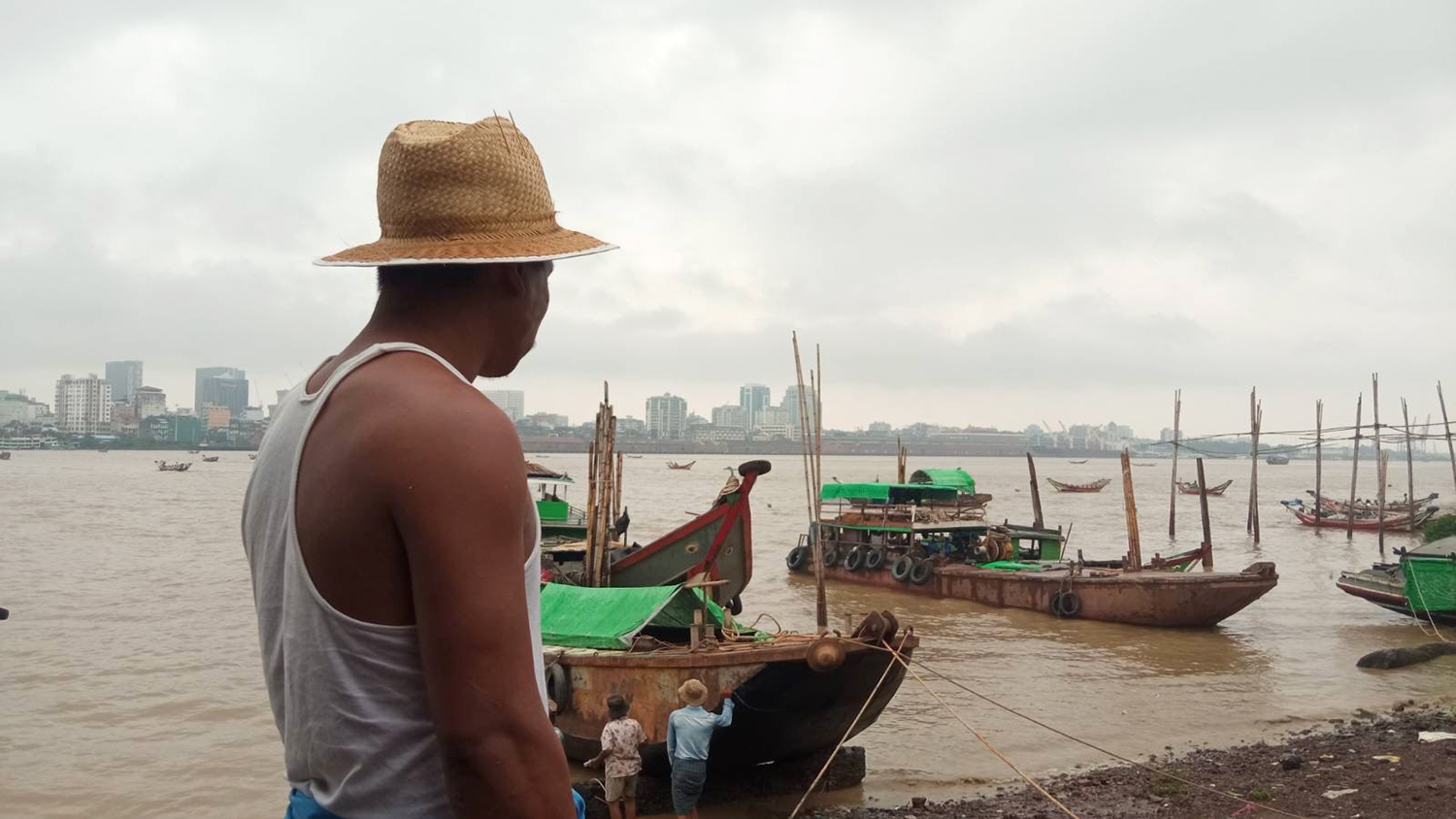The minimum daily wage of K3,600 would not be enough to lift workers and their families out of poverty, the international development charity said last week.
By KYAW PHONE KYAW | FRONTIER
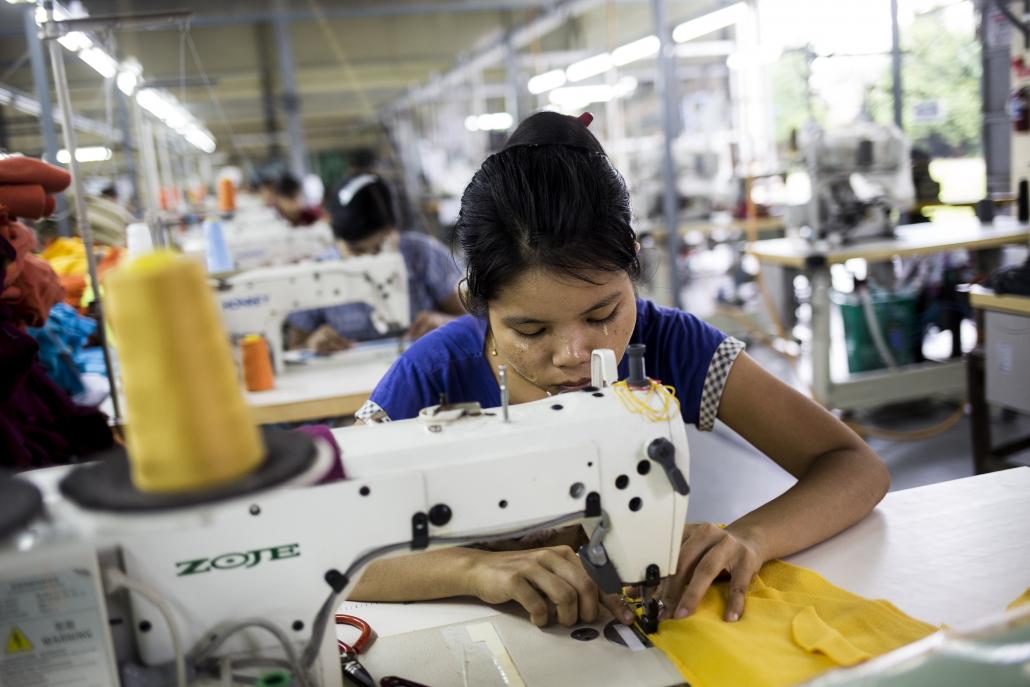
The minimum daily wage of K3,600 would not be enough to lift workers and their families out of poverty, the international development charity Oxfam said last week. (Ann Wang / Frontier)
The minimum daily wage of K3,600 (US$2.80) introduced by the government on September 1 would not be enough to lift workers and their families out of poverty, the international development charity Oxfam said last week in a report based on a survey of garment sector employees.
The survey was conducted in June and July, before the introduction of the minimum daily wage, which was based on a five-and-a-half day, 44-hour week, or the equivalent of K108,000 (US$ 83.70) a month.
Workers interviewed for the survey reported that with overtime they were able to earn an average of K122,000 a month, “but even this was not enough to cover basic costs for food, medicine and accommodation,” said Oxfam.
Support more independent journalism like this. Sign up to be a Frontier member.
Its report, “Made in Myanmar: Entrenched poverty or decent jobs for garment workers”, in which it collaborated with the Cooperative Committee of Trade Unions, Action Labor Rights, Labour Rights Defenders and Promoters and the 88 Generation Peace and Open Society group, was released on December 9.
The report said that as well as sinking into poverty and debt, many garment workers had to tolerate unsafe working conditions.
The report was based on interviews conducted in June and July with 123 garment workers at 22 factories in five industrial zones in Yangon and one in Bago.
Most of the respondents, 90 percent, were women who had migrated from Ayeyarwady, Bago, Magwe and Sagaing regions and Mon and Rakhine states. Their average age was 23 and they had been working in garment factories for a year.
“They think that we are like animals. I know I have no rights to make a complaint so I have to bear it. I have been working here so many years and we try our best to meet the production targets so that we won’t be told off, but sometimes [the shouting] is unbearable.”
The introduction of the minimum daily wage in September had not solved the cost of living problems of workers, said Ko Ye Naing Win, the chairman of the Cooperative Committee of Trade Unions.
“The living costs are rising gradually and some allowances paid to factory workers by the owners, such as the ferry [transport] and meal support for lunch have been cut,” said Ko Ye Naing Win. “So, it means the salary is a little bit more but the workers have to spend more money on living costs, too,” he said.
The report found that at one factory, workers claimed to be earning up to 30 percent less than before the introduction of the minimum wage.
It also found that nearly a quarter of those surveyed were forced to work overtime against their will and there were also many cases of unpaid overtime.
Concern about hazardous working conditions was also highlighted in the report, with 43 percent of respondents saying they did not think their workplace was safe. Many workers said building exits were blocked or locked. “There is a fire brigade, but only just for show,” one worker told Oxfam.
Some workers spoke of fear of electric shocks from machinery and 31 percent said they had experienced verbal or other abuse by supervisors or management.
“They think that we are like animals,” garment factory worker Ma Swe Swe Hlaing told Oxfam. “I know I have no rights to make a complaint so I have to bear it. I have been working here so many years and we try our best to meet the production targets so that we won’t be told off, but sometimes it [the shouting] is unbearable,” she said.
About 43 percent of the workers said they were trapped in debt and owed an average of K57,000. More than half of those surveyed said they struggled to repay debts because the interest charged averaged 18 percent. The report said the workers borrowed money because of their inability to pay for necessities due to their low wages.
The Oxfam report was sharply criticised by U Kyaw Win, deputy chairman of the Myanmar Garment Manufacturers Association, who accused the charity of seeking publicity.
“Oxfam does not know much about the garment industry in Myanmar,” U Kyaw Win told Frontier. “It is easy for someone to spit on another person,” he said, before asking rhetorically what Oxfam would do to help the workers if they lost their jobs.
“They are not helping anybody but are blaming us; it is inappropriate,” he said, referring to the MGMA, which represents about 300 garment factories employing about 300,000 people and had pushed for a minimum daily wage of K2,500.
U Kyaw Win said garment factories were not jade mines or gold mines and did not make big profits.
He referred to the impact on the garment sector of an import ban introduced by the United States when it strengthened sanctions in 2003, which resulted in tens of thousands of workers, mainly women, losing their jobs.
The garment industry was trying to avoid a situation like that in 2003 when many in the industry lost their jobs, said U Kyaw Win.
“Oxfam does not understand us,” he said.
Responding to a comment by Oxfam private sector policy adviser Daisy Gardener that the report would be sent to international buyers of garments produced in Myanmar, U Kyaw Win said such a move would not affect the garment factories.
“The buyers won’t care because before they finalise an order they have already had third party independent organisations investigate the general conditions at the factories, including labour rights and salary rates,” he said. “The buyers will read Oxfam’s report but it will not have an impact on the business.”
The Oxfam report identifies neither the brands nor the factories covered by the survey.
However, the interviews with workers revealed that the factories were owned by companies or individuals in Myanmar, South Korea, Hong Kong, Germany and Britain.
The MGMA projected in a report in August that the value of the garment sector would grow from US$912 million in 2012 to between US$8 billion and US$10 billion in 2020, when it was expected to employ up to 1.5 million workers.


